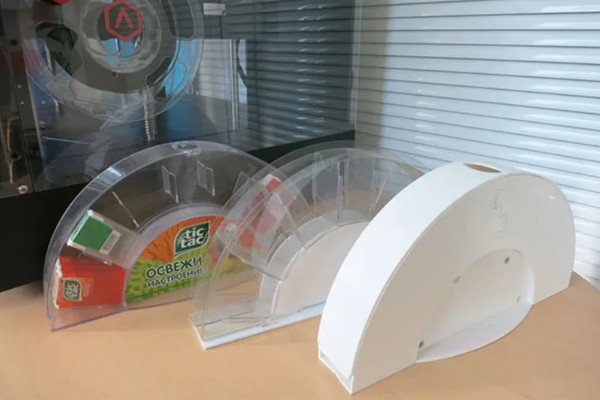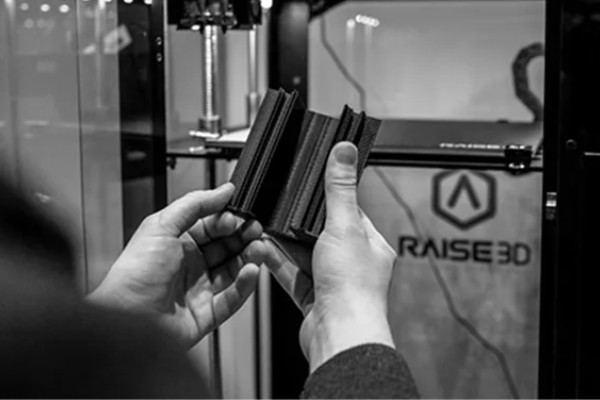We continue our series on the application of 3D printing in different fields. In this article, we look at the most popular area of application today – prototyping or creating models of future industrial products.
 Prototyping is a quick “draft” implementation of basic functionality of an idea product to analyze its operation as a whole.
Prototyping is a quick “draft” implementation of basic functionality of an idea product to analyze its operation as a whole.
Prototyping is the most important stage in creating a new product. At this stage, with little effort, a product is created that works in real life. While the product may have errors and not be very effectively, designers get a more detailed picture of what is possible.
All the things that surround us were created by someone and at one time. And during their creation, different design decisions for these products arose. Before the advent of 3D printing, many different methods were used for prototyping. These include milling, casting, plaster molds, among others.

3D Printing Prototyping
In 3D printing, you need to start by creating a 3D model. With prototyping, there are no problems with this, since designers and engineers create the models at the first stage of developing a new product.
If the product is based on an existing model, then a 3D scanner can be used. The 3D model obtained from scanning becomes the basis for creating a new design.
Free or commercial sites that offer 3D STL files are unlikely to be useful. This is because the sites are mostly filled with decorative or reverse-engineered models.

Why Do You Need a Prototype?
When you already have a 3D model, you need to know what you want the prototype you want to print will accomplish.
There are three main reasons why you may want to build a prototype. These are to create decorative, partially functional or fully functional models.

Printing decorative prototypes is quite easy. However, some models can also be quite complex to manufacture.
The good thing is that there is a wide range of 3D printing filaments and resins. Typically, for prototyping, the simplest materials are used to print. After printing, you will have the object you need and can confirm the necessary measurements, checks, demonstrations and other actions for which the item is intended for.
Let’s look at an example of the housing of an electronic device. This item is supposed to be made of durable plastic or metal. A prototype is needed in order to understand how to arrange all the components inside the device. As a rule, in the process of developing such products, you can create 10-20 prototypes of similar layouts.

The second case is a partially functional prototype.
Let’s look at another example of a container prototype. Today, 3D printing is widely used when developing new packaging, such as bottles. But you cannot just print a bottle model with any kind of plastic and use it as a prototype. The model must have specific properties, such as transparency like is the case with glass or plastic, from which the final, usable products will be produced from.
Today, 3D printing is widely used when developing new packaging, such as bottles. But you cannot just print a bottle model with any kind of plastic and use it as a prototype. The model must have specific properties, such as transparency like is the case with glass or plastic, from which the final, usable products will be produced from.
Thus, it is important that the printing material you use is as close as possible to the desired one in terms of transparency. For example, if this was a prototype for a yoghurt jar, the print material must be flexible enough to bend one piece.
In cases where a model must have partial functionality, it is important to choose the right materials that solve this problem, and the 3D printing technology that will cope with these materials.
And finally, choose a printer that will be able to solve the problem, based on the size, complexity and print material. Read our guide on how to choose a 3D printer.

The hardest part is creating a fully functional prototype. This is because the prototype must fully correspond to the final product that will be put into mass production.
3D printing can cope with this task. However, the cost of manufacturing a model will depend on the desired functionality of the final product. In most cases, we are talking about heat, abrasion resistance, impact resistance, acids or other corrosive liquids.
In most cases, we are talking about heat, abrasion resistance, impact resistance, acids or other corrosive liquids.
Ideally, you should make a prototype using the exact material that will be used for the final product. However, this often cannot be done using 3D printing, since not all materials can be used in 3D printers. In this case, you can use a similar material that will be close in physical and mechanical properties to the desired one. This way, the model will be close to the required functionality, although it may not be able to be as durable as a serial part.
Thus, we can safely say that 3D printing is an excellent tool for prototyping, primarily due to the high speed of model production and relatively low cost. 
Choosing a 3D printer for Prototyping
Before choosing a 3D printing, it is important to decide on the print material, technology and budget. Choose the 3D printing technology that best suits your needs. All technologies are suitable to one degree or another.
Below is an overview of the common 3D printing technologies.
SLS, FDM and SLA 3D Printing Technologies
The most common 3D printing technologies are SLS (selective laser sintering), FDM (fused deposition modeling) and SLA (laser stereolithography). We’ve already covered these 3D printing technologies in detail. Read this guide: Types of 3D Printing Technologies for a refresher.
The most important things to keep in mind is that the 3D printer you choose should be able to print the materials with the characteristics that you need your prototypes to have. Also, consider the potential complexity and size of your prototypes.
As in all other cases, it is advisable to do a test print before buying. This will help you decide on the 3D printer model to go for, as well as understand whether 3D printing meets your expectations.
 Speaking of specific models, we recommend the Raise3D Pro2 Plus printer for FDM prototyping. The official website of the company contains a lot of interesting cases on the use of these printers in prototyping parts of varying complexity.
Speaking of specific models, we recommend the Raise3D Pro2 Plus printer for FDM prototyping. The official website of the company contains a lot of interesting cases on the use of these printers in prototyping parts of varying complexity.

 Also, I would like to draw your attention to the Phrozen Transform model, which works using SLA technology. Its large camera and 4K display makes it a unique desktop prototyping printer.
Also, I would like to draw your attention to the Phrozen Transform model, which works using SLA technology. Its large camera and 4K display makes it a unique desktop prototyping printer.
 Finally, moving on to industrial 3D printers, it’s worth mentioning the HP JetFusion 500/300 printer line . These models have a number of advantages, including high productivity, low cost of printing, and the ability to create full-color models.
Finally, moving on to industrial 3D printers, it’s worth mentioning the HP JetFusion 500/300 printer line . These models have a number of advantages, including high productivity, low cost of printing, and the ability to create full-color models.

We will be happy to help you in choosing the necessary 3D equipment for your tasks. Get in touch with us for expert advice from our engineers.
